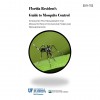 This 40-page publication describes how homeowners can use an integrated pest management (IPM) program to help decrease pesticide use, reduce the risk of contracting mosquito-borne diseases, and ease the financial burden on local governments responsible for area-wide control. Modern mosquito control emphasizes source reduction to eliminate areas where mosquitoes thrive; surveillance to determine whether pesticide applications are necessary; screening; sanitation; and other techniques described in this document. The methods recommended in this publication are particularly effective in reducing mosquitoes that transmit diseases. Homeowners who take responsibility for identifying and eliminating sources of mosquito production around their homes and neighborhoods will improve health and quality of life for all Florida residents. Written by C. R. Connelly, E. Bolles, D. Culbert, J. DeValerio, M. Donahoe, K. Gabel, R. Jordi, J. McLaughlin, A. S. Neal, S. Scalera, E. Toro, and J. Walter, and published by the UF Department of Entomology and Nematology, September 2014.
This 40-page publication describes how homeowners can use an integrated pest management (IPM) program to help decrease pesticide use, reduce the risk of contracting mosquito-borne diseases, and ease the financial burden on local governments responsible for area-wide control. Modern mosquito control emphasizes source reduction to eliminate areas where mosquitoes thrive; surveillance to determine whether pesticide applications are necessary; screening; sanitation; and other techniques described in this document. The methods recommended in this publication are particularly effective in reducing mosquitoes that transmit diseases. Homeowners who take responsibility for identifying and eliminating sources of mosquito production around their homes and neighborhoods will improve health and quality of life for all Florida residents. Written by C. R. Connelly, E. Bolles, D. Culbert, J. DeValerio, M. Donahoe, K. Gabel, R. Jordi, J. McLaughlin, A. S. Neal, S. Scalera, E. Toro, and J. Walter, and published by the UF Department of Entomology and Nematology, September 2014.
http://edis.ifas.ufl.edu/in1045
Author: dihagan
Budgets for Pasture Establishment: Seeded and Vegetative
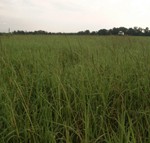 Budgets can be used to make rational decisions when establishing or renovating a pasture in Florida. This 3-page fact sheet is a guide for evaluating the costs of establishing a seeded-type pasture versus vegetatively propagated hybrid bermudagrasses. Written by Les Harrison, Jonael Bosques, and Yoana Newman, and published by the UF Department of Agronomy, August 2014.
Budgets can be used to make rational decisions when establishing or renovating a pasture in Florida. This 3-page fact sheet is a guide for evaluating the costs of establishing a seeded-type pasture versus vegetatively propagated hybrid bermudagrasses. Written by Les Harrison, Jonael Bosques, and Yoana Newman, and published by the UF Department of Agronomy, August 2014.
http://edis.ifas.ufl.edu/ag386
Peach Scab
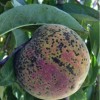 Peach scab is a disease caused by the fungus Cladosporium carpophilum. The pathogen can infect other fruits and nuts within the Prunus species, like almonds, apricots, nectarines, and plums. Peach scab is common during periods of humid weather because rain splashes the conidia (asexual spores) from the fungus between leaves, twigs, and fruit in the tree canopy, which spreads the disease. This 6-page fact sheet was written by Daniel Mancero-Castillo, Mercy Olmstead, and Phillip Harmon, and published by the UF Department of Horticultural Sciences, July 2014.
Peach scab is a disease caused by the fungus Cladosporium carpophilum. The pathogen can infect other fruits and nuts within the Prunus species, like almonds, apricots, nectarines, and plums. Peach scab is common during periods of humid weather because rain splashes the conidia (asexual spores) from the fungus between leaves, twigs, and fruit in the tree canopy, which spreads the disease. This 6-page fact sheet was written by Daniel Mancero-Castillo, Mercy Olmstead, and Phillip Harmon, and published by the UF Department of Horticultural Sciences, July 2014.
http://edis.ifas.ufl.edu/hs1249
Facts about Wildlife Diseases: Pseudorabies
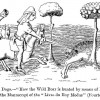 Pseudorabies primarily affects swine, but cattle, sheep and other mammals are susceptible to infection. Humans are not at risk. The superficial symptoms of this viral disease resemble rabies symptoms, thus the name pseudorabies. Although eliminated in commercial animals, feral swine populations in the United States continue to circulate the disease and provide a reservoir for outbreaks. Texas, Oklahoma, Florida, and Hawaii all have dense populations of feral swine with a high prevalence of pseudorabies. Feral swine, therefore, pose a serious risk to commercial swine operations, livestock, companion animals, and wildlife. This 4-page fact sheet was written by Samantha Wisely, and published by the UF Department of Wildlife Ecology and Conservation, August 2014.
Pseudorabies primarily affects swine, but cattle, sheep and other mammals are susceptible to infection. Humans are not at risk. The superficial symptoms of this viral disease resemble rabies symptoms, thus the name pseudorabies. Although eliminated in commercial animals, feral swine populations in the United States continue to circulate the disease and provide a reservoir for outbreaks. Texas, Oklahoma, Florida, and Hawaii all have dense populations of feral swine with a high prevalence of pseudorabies. Feral swine, therefore, pose a serious risk to commercial swine operations, livestock, companion animals, and wildlife. This 4-page fact sheet was written by Samantha Wisely, and published by the UF Department of Wildlife Ecology and Conservation, August 2014.
http://edis.ifas.ufl.edu/uw388
Peanut Variety Performance in Florida, 2010–2013
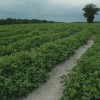 Variety choice is a critical management decision in producing a peanut crop. Since several good peanut varieties are available, it is essential to know each variety’s attributes and how different varieties might fit into a farm plan. This 7-page fact sheet provides data conducted from trials in Florida at UF/IFAS research centers located in Gainesville (Citra), Marianna, and Jay from 2010–2013. Written by Barry Tillman, Mark Gomillion, Justin McKinney, and George Person, and published by the UF Department of Agronomy, May 2014.
Variety choice is a critical management decision in producing a peanut crop. Since several good peanut varieties are available, it is essential to know each variety’s attributes and how different varieties might fit into a farm plan. This 7-page fact sheet provides data conducted from trials in Florida at UF/IFAS research centers located in Gainesville (Citra), Marianna, and Jay from 2010–2013. Written by Barry Tillman, Mark Gomillion, Justin McKinney, and George Person, and published by the UF Department of Agronomy, May 2014.
http://edis.ifas.ufl.edu/ag382
Can Maternal Colostrum Be Replaced by Commercial Products for Feeding Newborn Calves?
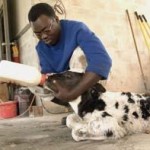 Colostrum management and feeding are critical for calf health, calves’ future productive life, and farm profitability. Current recommendations state that a calf needs to ingest at least 150–200 g of immunoglobulin G within two hours of birth, but when colostrum quality is poor or unavailable, colostrum replacer may be a suitable alternative. This 3-page fact sheet presents the results of a recent publication that evaluated the effects of feeding maternal colostrum, one dose of plasma-derived colostrum replacer, or one dose of colostrum-derived colostrum replacer on serum total protein, immunoglobulin G concentration, calf morbidity, calf mortality, and weight gain from birth to weaning. Written by Klibs N. Galvao, and published by the UF Department of Veterinary Medicine-Large Animal Clinical Sciences, May 2014.
Colostrum management and feeding are critical for calf health, calves’ future productive life, and farm profitability. Current recommendations state that a calf needs to ingest at least 150–200 g of immunoglobulin G within two hours of birth, but when colostrum quality is poor or unavailable, colostrum replacer may be a suitable alternative. This 3-page fact sheet presents the results of a recent publication that evaluated the effects of feeding maternal colostrum, one dose of plasma-derived colostrum replacer, or one dose of colostrum-derived colostrum replacer on serum total protein, immunoglobulin G concentration, calf morbidity, calf mortality, and weight gain from birth to weaning. Written by Klibs N. Galvao, and published by the UF Department of Veterinary Medicine-Large Animal Clinical Sciences, May 2014.
http://edis.ifas.ufl.edu/vm196
What Is the Most Cost-Effective Breeding Program for Lactating Dairy Cows: Timed AI, Estrous Detection, or a Combination of Both?
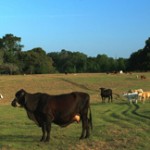 As any other business enterprise, the sustainability of a dairy farm is highly dependent on economics. Reproduction influences both milk production and number of replacement heifers available on a farm; therefore, reproductive efficiency becomes a key determinant of dairy cow profitability. Several parameters affect reproductive performance. This 4-page fact sheet presents information from recently published articles that looked at the economics of different reproductive programs for breeding dairy cows that use estrus detection only, timed AI only, or a combination of both. Written by Klibs N. Galvão, Gustavo M. Schuenemann, Eduardo S. Ribeiro, and Jose Eduardo P. Santos, and published by the UF Department of Veterinary Medicine-Large Animal Clinical Sciences, May 2014.
As any other business enterprise, the sustainability of a dairy farm is highly dependent on economics. Reproduction influences both milk production and number of replacement heifers available on a farm; therefore, reproductive efficiency becomes a key determinant of dairy cow profitability. Several parameters affect reproductive performance. This 4-page fact sheet presents information from recently published articles that looked at the economics of different reproductive programs for breeding dairy cows that use estrus detection only, timed AI only, or a combination of both. Written by Klibs N. Galvão, Gustavo M. Schuenemann, Eduardo S. Ribeiro, and Jose Eduardo P. Santos, and published by the UF Department of Veterinary Medicine-Large Animal Clinical Sciences, May 2014.
http://edis.ifas.ufl.edu/vm198
What Is the Most Cost-Effective Breeding Program for Breeding Heifers: Timed AI, Estrous Detection, or a Combination of Both?
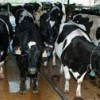 As any other business enterprise, the sustainability of a dairy farm is highly dependent on economics. In order to obtain a profitable return on assets, there is a constant need to maximize outputs and, oftentimes, to minimize inputs. Reproduction influences both milk production and number of replacement heifers available on a farm; therefore, reproductive efficiency becomes a key determinant of dairy cow profitability. This 3-page fact sheet presents information from recently published work that looked at the economics of different reproductive programs for breeding heifers that use timed AI only, estrus detection only, or a combination of both. Written by Klibs N. Galvão, Eduardo S. Ribeiro, and Jose Eduardo P. Santos, and published by the UF Department of Veterinary Medicine-Large Animal Clinical Sciences, May 2014.
As any other business enterprise, the sustainability of a dairy farm is highly dependent on economics. In order to obtain a profitable return on assets, there is a constant need to maximize outputs and, oftentimes, to minimize inputs. Reproduction influences both milk production and number of replacement heifers available on a farm; therefore, reproductive efficiency becomes a key determinant of dairy cow profitability. This 3-page fact sheet presents information from recently published work that looked at the economics of different reproductive programs for breeding heifers that use timed AI only, estrus detection only, or a combination of both. Written by Klibs N. Galvão, Eduardo S. Ribeiro, and Jose Eduardo P. Santos, and published by the UF Department of Veterinary Medicine-Large Animal Clinical Sciences, May 2014.
http://edis.ifas.ufl.edu/vm199
Can GnRH Be Used to Induce Ovulation Early in Lactation and Improve Fertility in Dairy Cows?
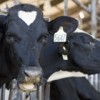 It is well established that early cyclicity results in increased pregnancy per artificial insemination and decreased time to pregnancy. But none of the previous studies has used synchronization programs such as the Presynch-Ovsynch as part of their reproductive management. This 2-page fact sheet presents the results of a recent paper that evaluated the effects of administration of GnRH at 17 ± 3 and 20 ± 3 DIM in Holstein dairy cows without a corpus luteum (CL) on induction of ovulation, uterine health, and reproductive outcomes. Written by Klibs N. Galvão, and published by the UF Department of Veterinary Medicine-Large Animal Clinical Sciences, July 2014.
It is well established that early cyclicity results in increased pregnancy per artificial insemination and decreased time to pregnancy. But none of the previous studies has used synchronization programs such as the Presynch-Ovsynch as part of their reproductive management. This 2-page fact sheet presents the results of a recent paper that evaluated the effects of administration of GnRH at 17 ± 3 and 20 ± 3 DIM in Holstein dairy cows without a corpus luteum (CL) on induction of ovulation, uterine health, and reproductive outcomes. Written by Klibs N. Galvão, and published by the UF Department of Veterinary Medicine-Large Animal Clinical Sciences, July 2014.
http://edis.ifas.ufl.edu/vm201
Targeting ADG of Developing Replacement Heifers Using Age and Body Weight
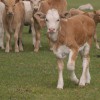 Heifer development continues to be one of the largest expenses to cow-calf operations, primarily due to cost of feed. Replacement heifers should be bred to calve at 24 months of age in order to maximize lifetime productivity of breeding females. Therefore, heifers should conceive at 15 months of age and achieve puberty at 13–14 months of age because heifers are infertile on the pubertal estrous cycle. This 4-page fact sheet was written by Phillip Lancaster and Cliff Lamb, and published by the UF Department of Animal Sciences, September 2014.
Heifer development continues to be one of the largest expenses to cow-calf operations, primarily due to cost of feed. Replacement heifers should be bred to calve at 24 months of age in order to maximize lifetime productivity of breeding females. Therefore, heifers should conceive at 15 months of age and achieve puberty at 13–14 months of age because heifers are infertile on the pubertal estrous cycle. This 4-page fact sheet was written by Phillip Lancaster and Cliff Lamb, and published by the UF Department of Animal Sciences, September 2014.
http://edis.ifas.ufl.edu/an305
Pests and Fungal Organisms Identified on Olives (Olea europaea) in Florida
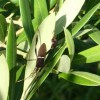 Olive production in Florida has increased over the last few years. As trees become available in nurseries many homeowners are planting them in their landscapes. Fortunately, olives are a relatively pest-free species, but some occasional invaders can be a nuisance or cause lasting harm. A few plant pathogens that may infect olives also can lead to a decline in overall plant health, fruit yield, or the visual appearance of plants. Following correct cultural practices when growing olives can reduce your chances of tree loss from pests and diseases. A survey of olive production and interviews with Florida growers in 2014 identified the pests and diseases described in this 5-page fact sheet, written by Jennifer L. Gillett-Kaufman, Sandra A. Allan, Jonael H. Bosques-Mendez, and Lyle J. Buss, and published by the UF Department of Entomology and Nematology, September 2014.
Olive production in Florida has increased over the last few years. As trees become available in nurseries many homeowners are planting them in their landscapes. Fortunately, olives are a relatively pest-free species, but some occasional invaders can be a nuisance or cause lasting harm. A few plant pathogens that may infect olives also can lead to a decline in overall plant health, fruit yield, or the visual appearance of plants. Following correct cultural practices when growing olives can reduce your chances of tree loss from pests and diseases. A survey of olive production and interviews with Florida growers in 2014 identified the pests and diseases described in this 5-page fact sheet, written by Jennifer L. Gillett-Kaufman, Sandra A. Allan, Jonael H. Bosques-Mendez, and Lyle J. Buss, and published by the UF Department of Entomology and Nematology, September 2014.
http://edis.ifas.ufl.edu/in1046
Florida Nursery Crops and Landscaping Industry Economic Impacts, Situation, and Outlook
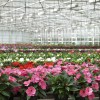 Florida is one of the leading environmental horticulture producers in the United States, ranked second only to California. In 2010, total industry sales were estimated at $12.33 billion. This 10-page report summarizes the current situation, economic impacts, and outlook for the environmental horticulture industry in Florida. Written by Hayk Khachatryan and Alan W. Hodges, and published by the UF Department of Food and Resource Economics, September 2014.
Florida is one of the leading environmental horticulture producers in the United States, ranked second only to California. In 2010, total industry sales were estimated at $12.33 billion. This 10-page report summarizes the current situation, economic impacts, and outlook for the environmental horticulture industry in Florida. Written by Hayk Khachatryan and Alan W. Hodges, and published by the UF Department of Food and Resource Economics, September 2014.
http://edis.ifas.ufl.edu/fe946
When Should We Stop Breeding Dairy Cows?
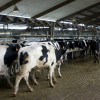 The decision of when to start and when to stop breeding cows during a lactation is often a challenging one for dairy producers. This 3-page fact sheet presents practical rules on how to determine when to stop breeding Holstein dairy cows based on persistency of milk production and break-even point for milk production. Written by Klibs N. Galvão and Albert De Vries, and published by the UF Department of Veterinary Medicine-Large Animal Clinical Sciences, July 2014.
The decision of when to start and when to stop breeding cows during a lactation is often a challenging one for dairy producers. This 3-page fact sheet presents practical rules on how to determine when to stop breeding Holstein dairy cows based on persistency of milk production and break-even point for milk production. Written by Klibs N. Galvão and Albert De Vries, and published by the UF Department of Veterinary Medicine-Large Animal Clinical Sciences, July 2014.
http://edis.ifas.ufl.edu/vm202
Should You Breed Cows during the Summer in the Southeastern United States? An Economic Analysis of a Dairy Herd in Florida
 In the southeast United States, since dairy cows experience decreased reproductive performance during the hot and humid summers, some dairy farmers delay breeding until the cooler fall. But there is no economic data to support this practice. This 3-page fact sheet presents the results of a recent paper that evaluated the effects that delaying breeding during the summer has on cow performance and profitability in Florida. Written by Klibs N. Galvão and Albert De Vries, and published by the UF Department of Veterinary Medicine-Large Animal Clinical Sciences, July 2014.
In the southeast United States, since dairy cows experience decreased reproductive performance during the hot and humid summers, some dairy farmers delay breeding until the cooler fall. But there is no economic data to support this practice. This 3-page fact sheet presents the results of a recent paper that evaluated the effects that delaying breeding during the summer has on cow performance and profitability in Florida. Written by Klibs N. Galvão and Albert De Vries, and published by the UF Department of Veterinary Medicine-Large Animal Clinical Sciences, July 2014.
http://edis.ifas.ufl.edu/vm195
Costs and Benefits of More Efficient Irrigation Systems for Florida Chipping Potato Production
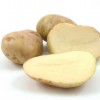 The goal of this 11-page fact sheet is to help producers and other interested parties understand how alternative irrigation systems can affect economic outcomes in agricultural operations. We used chipping potato production in the Hastings area in northeast Florida as an example to discuss factors to consider when selecting an irrigation system. Written by Jenna Rogers, Tatiana Borisova, Lincoln Zotarelli, Kelly Grogan, Jeffrey Ullman, Jessica Bertine, and Kelly Morgan, and published by the UF Department of Food and Resource Economics, September 2014.
The goal of this 11-page fact sheet is to help producers and other interested parties understand how alternative irrigation systems can affect economic outcomes in agricultural operations. We used chipping potato production in the Hastings area in northeast Florida as an example to discuss factors to consider when selecting an irrigation system. Written by Jenna Rogers, Tatiana Borisova, Lincoln Zotarelli, Kelly Grogan, Jeffrey Ullman, Jessica Bertine, and Kelly Morgan, and published by the UF Department of Food and Resource Economics, September 2014.
http://edis.ifas.ufl.edu/fe953
How to Start a Food Business: Introduction
 While running your own food business can be a rewarding and exciting experience, it can be overwhelming and stressful. It is important to understand the pros and cons of running your own food business and decide if you are ready to pursue a food business venture. This 3-page fact sheet was written by Soohyoun Ahn, Renee Goodrich-Schneider, and Amarat H. Simonne, and published by the UF Department of Food Science and Human Nutrition, September 2014.
While running your own food business can be a rewarding and exciting experience, it can be overwhelming and stressful. It is important to understand the pros and cons of running your own food business and decide if you are ready to pursue a food business venture. This 3-page fact sheet was written by Soohyoun Ahn, Renee Goodrich-Schneider, and Amarat H. Simonne, and published by the UF Department of Food Science and Human Nutrition, September 2014.
http://edis.ifas.ufl.edu/fs254
Pavement ant Tetramorium caespitum (Linnaeus) (Insecta: Hymenoptera: Formicidae)
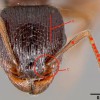 The pavement ant is one of the most commonly encountered ants in the United States. Since first introduced from Europe at the beginning of the nineteenth century, the ant has become well established and is prevalent in urban areas in the northern U.S. and parts of Canada. However, the extent of their invasiveness and severity as a pest is not well characterized. This 5-page fact sheet was written by Tyler Vitone and Andrea Lucky, and published by the UF Department of Entomology and Nematology, September 2014.
The pavement ant is one of the most commonly encountered ants in the United States. Since first introduced from Europe at the beginning of the nineteenth century, the ant has become well established and is prevalent in urban areas in the northern U.S. and parts of Canada. However, the extent of their invasiveness and severity as a pest is not well characterized. This 5-page fact sheet was written by Tyler Vitone and Andrea Lucky, and published by the UF Department of Entomology and Nematology, September 2014.
http://edis.ifas.ufl.edu/in1047
Closing Your Seasonal Home
 Get organized and make a plan before you lock your doors to leave your home for an extended period of time. Proper preparation inside and out will help ensure your return to a clean, undamaged home. Florida’s environment creates the possibility for mildew growth, storm damage, and pests. Unoccupied homes are more susceptible to these types of damage. This 6-page fact sheet provides the necessary steps to prepare your home before leaving for an extended period of time. There is also a checklist to help you remember. Written by Julie England, Audrey Norman, Randall A. Cantrell, and Maria J. Portelos-Rometo, and published by the UF Department of Family Youth and Community Sciences, June 2014.
Get organized and make a plan before you lock your doors to leave your home for an extended period of time. Proper preparation inside and out will help ensure your return to a clean, undamaged home. Florida’s environment creates the possibility for mildew growth, storm damage, and pests. Unoccupied homes are more susceptible to these types of damage. This 6-page fact sheet provides the necessary steps to prepare your home before leaving for an extended period of time. There is also a checklist to help you remember. Written by Julie England, Audrey Norman, Randall A. Cantrell, and Maria J. Portelos-Rometo, and published by the UF Department of Family Youth and Community Sciences, June 2014.
http://edis.ifas.ufl.edu/he887
Florida 4-H Officer's Handbook
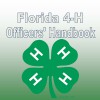 The duties and responsibilities of each of the club officer roles are outlined in this helpful guide. It also includes a 4-H club meeting checklist and information about club performance recognition. This 12-page fact sheet was written by Judith Levings, Ali Baker, Sarah Hensley, Stacey Ellison, and published by the UF Department of 4-H Youth Development, September 2014.
The duties and responsibilities of each of the club officer roles are outlined in this helpful guide. It also includes a 4-H club meeting checklist and information about club performance recognition. This 12-page fact sheet was written by Judith Levings, Ali Baker, Sarah Hensley, Stacey Ellison, and published by the UF Department of 4-H Youth Development, September 2014.
http://edis.ifas.ufl.edu/4h049
Florida 4-H Treasurer's Manual and Record Book
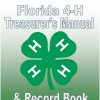 Being the treasurer is a very important position in your club. Your fellow 4-H Club Members have shown their confidence in you by letting you have this responsibility. As treasurer, you will be responsible for taking care of the club’s money, bank accounts, or other money matters. This 32-page manual and record book has been updated by Judith Levings, Sarah Hensley, and Stacey Ellison, and published by the UF Department of 4-H Youth Development, September 2014.
Being the treasurer is a very important position in your club. Your fellow 4-H Club Members have shown their confidence in you by letting you have this responsibility. As treasurer, you will be responsible for taking care of the club’s money, bank accounts, or other money matters. This 32-page manual and record book has been updated by Judith Levings, Sarah Hensley, and Stacey Ellison, and published by the UF Department of 4-H Youth Development, September 2014.
http://edis.ifas.ufl.edu/4h012